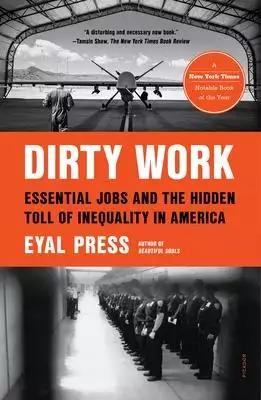psychological safety的問題,透過圖書和論文來找解法和答案更準確安心。 我們挖掘到下列精選懶人包
psychological safety的問題,我們搜遍了碩博士論文和台灣出版的書籍,推薦寫的 The Care Equation: How You Can Lead with Empathy and Build Psychological Safety Within Your Team 和Press, Eyal的 Dirty Work: Essential Jobs and the Hidden Toll of Inequality in America都 可以從中找到所需的評價。
這兩本書分別來自 和所出版 。
靜宜大學 寰宇管理碩士學位學程 何淑熏所指導 洪銨琪的 Covid-19 對以態度為中介的植物性食品購買意願的影響因素 (2021),提出psychological safety關鍵因素是什麼,來自於。
而第二篇論文國防醫學院 醫學科學研究所 高啟雯所指導 謝慧玲的 以疾病不確定感理論發展整合性心動健康網路照顧模式提升心房顫動病人因應策略之成效探討 (2021),提出因為有 整合性照顧、移動健康醫療、心房顫動、疾病不確定感、因應策略的重點而找出了 psychological safety的解答。
The Care Equation: How You Can Lead with Empathy and Build Psychological Safety Within Your Team

為了解決psychological safety 的問題,作者 這樣論述:
Covid-19 對以態度為中介的植物性食品購買意願的影響因素
為了解決psychological safety 的問題,作者洪銨琪 這樣論述:
This research was conducted with the aim of testing and analysing the influence of influences factors (Health Consciousness, Environmental Concern, Social Influence, and Perceived Attributes) on purchase intention of plant-based food products, the effect of the role of Covid-19 impact as a moderato
r, and the influence of the role of attitude as a mediator. The questionnaire was distributed online to 338 respondents (283 Indonesian respondents and 55 Taiwanese respondents) using Google Form as the media. In processing the data, this research used Statistical Package for Social Sciences (SPSS)
25.0 software and Partial Least Squares Structural Equation Model (PLS-SEM) with SmartPLS 3 software.The results of this study indicate a direct influence of health consciousness, social influence, and perceived attributes on the purchase intention of plant-based food products. Covid-19 impact and a
ttitude also show a moderating and mediating effect on the influence of social influence and perceived attributes on the purchase intention of plant-based food products. However, there was no direct or indirect effect of environmental concern on the purchase intention of plant-based food products.
Dirty Work: Essential Jobs and the Hidden Toll of Inequality in America

為了解決psychological safety 的問題,作者Press, Eyal 這樣論述:
Winner of the 2022 Hillman Prize for Book JournalismA groundbreaking, urgent report from the front lines of dirty work--the work that society considers essential but morally compromisedDrone pilots who carry out targeted assassinations. Undocumented immigrants who man the "kill floors" of industr
ial slaughterhouses. Guards who patrol the wards of the United States’ most violent and abusive prisons. In Dirty Work, Eyal Press offers a paradigm-shifting view of the moral landscape of contemporary America through the stories of people who perform society’s most ethically troubling jobs. As Pres
s shows, we are increasingly shielded and distanced from an array of morally questionable activities that other, less privileged people perform in our name. The COVID-19 pandemic has drawn unprecedented attention to essential workers, and to the health and safety risks to which workers in prisons an
d slaughterhouses are exposed. But Dirty Work examines a less familiar set of occupational hazards: psychological and emotional hardships such as stigma, shame, PTSD, and moral injury. These burdens fall disproportionately on low-income workers, undocumented immigrants, women, and people of color. I
lluminating the moving, sometimes harrowing stories of the people doing society’s dirty work, and incisively examining the structures of power and complicity that shape their lives, Press reveals fundamental truths about the moral dimensions of work and the hidden costs of inequality in America.
以疾病不確定感理論發展整合性心動健康網路照顧模式提升心房顫動病人因應策略之成效探討
為了解決psychological safety 的問題,作者謝慧玲 這樣論述:
正文目錄正文目錄『表』目錄 IV『圖』目錄 V『附錄』目錄 VII中文摘要 VIII英文摘要 X第一章 緒論 1 第一節 研究背景、動機及重要性 1 第二節 研究目的 7第二章 文獻查證 8 第一節 心房顫動疾病簡介 8 第二節 疾病不確定感理論 15 第三節 疾病不確定感相關研究 22 第四節 整合性健康網路照顧模式的發展及運用 31第三章 研究架構與假設 36 第一節 研究架構 36 第二節 研究假設 37 第三節 名詞界定 38第四章 研究方法與過程 43 第一節 研究設計 43 第二節 研究對象及場所 45 第三節 研究工具 46
第四節 研究工具之信效度檢定 52 第五節 研究過程 59 第六節 研究倫量 63 第七節 資料處理與統計分析 64第五章 研究結果 66 第一節 心房顫動病人的基本屬性68 第二節 心房顫動病人的症狀困擾、疾病知識、社會支持、疾病不確定感、因應策略及心理困擾之前後測情形 76 第三節 介入「整合性心動健康網路照顧模式」對於心房顫動病人症狀困擾、疾病知識、社會支持、疾病不確定感、因應策略及心理困擾之成效 85第六章 討論 107 第一節 心房顫動病人的基本屬性現況分析 108 第二節 介入「整合性心動健康網路照顧模式」對於改善心房顫動病人症狀困擾之成效 111
第三節 介入「整合性心動健康網路照顧模式」對於改善心房顫動病人疾病知識之成效 113 第四節 介入「整合性心動健康網路照顧模式」對於改善心房顫動病人社會支持之成效 115 第五節 介入「整合性心動健康網路照顧模式」對於改善心房顫動病人疾病不確定感之成效 117 第六節 介入「整合性心動健康網路照顧模式」對於改善心房顫動病人因應策略之成效 119 第七節 介入「整合性心動健康網路照顧模式」對於改善心房顫動病人心理困擾之成效 121 第八節 研究限制 124第七章 結論與建議 125 第一節 結論 125 第二節 建議 127參考文獻 129附錄 141『表』目錄表1. 資料處理
與分析 65表2. 心房顫動病人之人口基本屬性 70表3. 心房顫動病人的疾病特性 74表4. 心房顫動病人症狀困擾、疾病知識、社會支持、疾病不確定感、因應策略及心理困擾之前測與後測結果 83表5. 以 GEE 方法探討整合性心動健康網路照顧模式於心房顫動病人症狀困擾改變之成效 86表6. 以 GEE 方法探討整合性心動健康網路照顧模式於心房顫動病人疾病知識改變之成效 89表7. 以GEE方法探討整合性心動健康網路照顧模式於心房顫動病人社會支持改變之成效 92表8. 以GEE方法探討整合性心動健康網路照顧模式對於心房顫動病人疾病不確定感之改變成效 95表9. 以GEE方法探討整合性心動健康網路
照顧模式對於心房顫動病人因應策略改變之成效 98表10. 以GEE方法探討整合性心動健康網路照顧模式對於心房顫動病人心理困擾改變之成效 103『圖』目錄圖1. 不確定感理論架構 21圖2. 研究架構圖 36圖3. 研究設計 44圖4. 流程圖 67圖5. 兩組在第三版症狀頻率-嚴重程度評估量表之症狀頻率次量表平均分數於前測、後測第一個月、第三個月與第六個月的變化 87圖6. 兩組在心房顫動知識量表平均分數於前測、後測第一個月、第三個月與第六個月的變化 90圖7. 兩組在醫療社會支持量表平均分數於前測、後測第一個月、第三個月與第六個月的變化 93圖8. 兩組在中文版Mishel疾病不確定感量表平
均分數於前測、後測第一個月、第三個月與第六個月的變化 96圖9. 兩組在簡易因應量表之應對因應策略次量表平均分數於前測、後測第一個月、第三個月與第六個月的變化 99圖10. 兩組在簡易因應量表之迴避因應策略次量表平均分數於前測、後測第一個月、第三個月與第六個月的變化 100圖11. 兩組在醫院焦慮憂鬱量表平均分數於前測、後測第一個月、第三個月與第六個月的變化 104圖12. 兩組在醫院焦慮憂鬱量表之焦慮次量表平均分數於前測、後測第一個月、第三個月與第六個月的變化 105圖13. 兩組在醫院焦慮憂鬱量表之憂鬱次量表平均分數於前測、後測第一個月、第三個月與第六個月的變化 106『附錄』目錄附錄一
心房顫動病人基本屬性量表 附錄一附錄二 第三版症狀頻率-嚴重程度評估量表之症狀頻率次量表 附錄二附錄三 心房顫動知識量表 附錄三附錄四 醫療社會支持量表 附錄四附錄五 中文版Mishel疾病不確定感量表 附錄五附錄六 簡易因應量表 附錄六附錄七 醫院憂鬱焦慮量表 附錄七